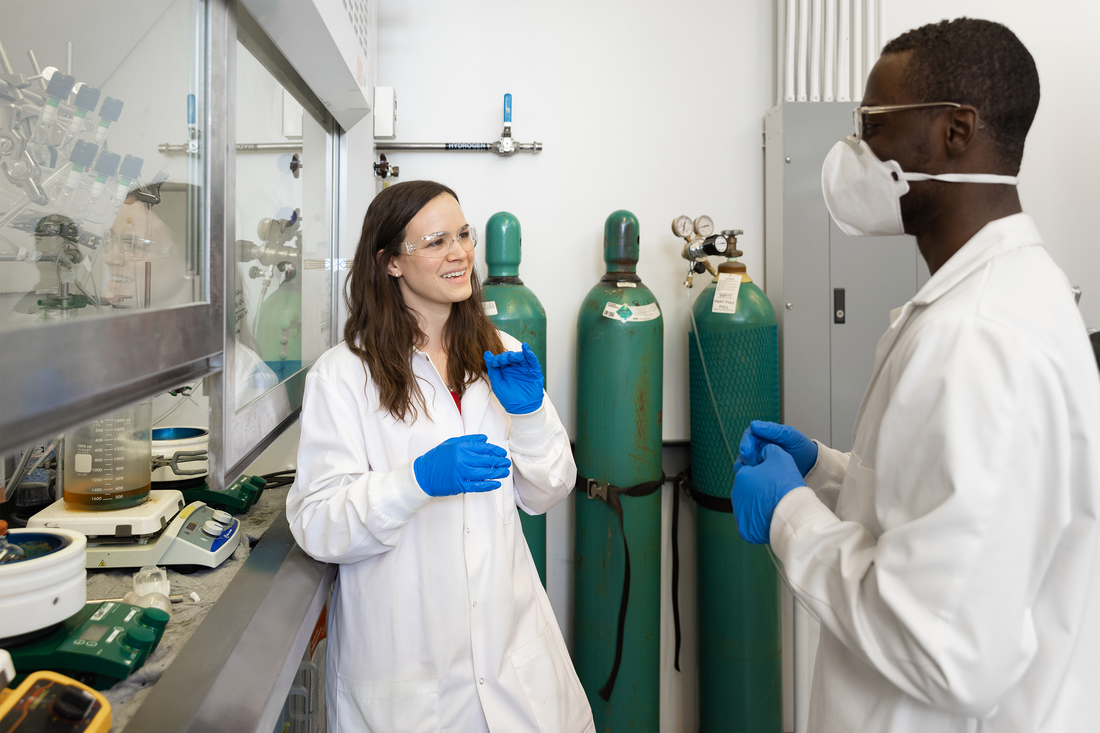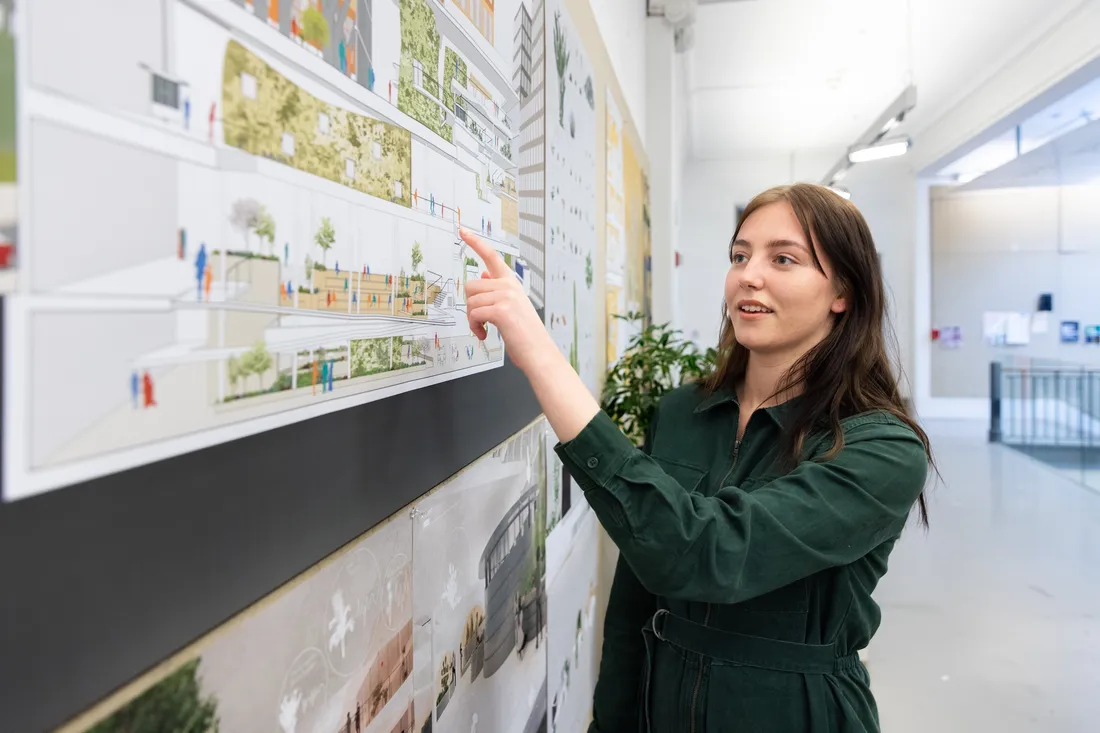Syracuse University faculty work every day to explore solutions to life’s most pressing health problems. Learn how faculty and students in the College of Engineering and Computer Science and the College of Arts and Sciences are researching lifesaving treatments and technologies.

Lab Focuses on Curing Brain-Related Diseases
One professor is exploring ways to advance medicinal treatments for Parkinson’s, Alzheimer’s and other neurodegenerative diseases.
For nearly a decade, Shikha Nangia, associate professor of biomedical and chemical engineering in the College of Engineering and Computer Science, has been unraveling a mystery of the molecular world. At issue is how to successfully permeate the blood-brain barrier, a nearly impenetrable border of cells that protects the brain. The barrier is vital for its role in preventing toxins and pathogens in the bloodstream from infecting the brain, but it also blocks drugs that could potentially target tumors or neurodegenerative diseases such as Alzheimer’s and Parkinson’s from reaching the brain.
With millions of people living with brain-related diseases, Nangia is determined to solve the mystery, knowing success could positively impact the lives of so many people and their families. “When students come to my lab and I tell them we are working toward finding a solution to Alzheimer’s, they perk up and ask how they can contribute because unfortunately all of us know somebody who is in that situation,” Nangia says.
An expert in thermodynamics and computational modeling, Nangia focuses on the biophysical aspects and interaction of proteins in the membranes of the cells that form the barrier. To investigate the barrier’s mechanics, she develops algorithms and simulations.
When students come to my lab and I tell them we are working toward finding a solution to Alzheimer’s, they perk up and ask how they can contribute because unfortunately all of us know somebody who is in that situation.
Associate professor Shikha Nangia
Nangia is especially excited about the idea of advancing to when drugs can be used to treat the brain in a noninvasive manner and avoid surgery. To that end, she’s exploring targeted cancer-drug delivery using nanoparticles (one nanometer is 100,000 times smaller than the width of a human hair); how nanoparticles of different shapes and sizes chemically interact with and move through cell membranes; and how to design virus-like particles for use in nanotechnology and nanomedicine.
“If we can discover a drug molecule that can go through the blood-brain barrier while keeping the barrier intact and then have it clinically delivered and out in the market, that would be the biggest success of our research,” she says.

Lab’s Synthetic Materials Repair Damaged Tissues and Organs
Biomedical professor drives breakthrough innovation on medical treatment of damaged tissues.
When Natalie Petryk ’21, G’22 wanted hands-on training in tissue engineering, she sought out Mary Beth Monroe, who was eager to show Petryk how synthetic materials can be used to repair damaged human tissue and organs.
Monroe was a newcomer to the College of Engineering and Computer Science when she started mentoring Petryk, a recipient of bachelor’s and master’s degrees in bioengineering. Their relationship has since flourished, with Petryk poised to begin Ph.D. studies in bioengineering and Monroe regarded as one of the field’s rising stars.
Monroe, an advocate for diversity and equity in the field of engineering, credits success to a culture of reciprocity with her students in the Department of Biomedical and Chemical Engineering. “I want to give members of my lab, many of whom are women, something they can’t get anywhere else,” says Monroe, who designs shape-memory polymers (SMPs)—materials made of chains of molecules that can return from a deformed shape to their original shape with the application of an external stimulus, like heat or moisture.
Everything Monroe does has a medical application. She inhabits Syracuse’s BioInspired Institute, a crucible of world-class interdisciplinary research, and federal and private agencies are taking notice of her work.
Monroe is researching treatment for fistulas—a chronic wound that strikes the urinary, reproductive and digestive systems and can lead to painful infections and abscesses. “A fistula takes a long time to heal. There’s big demand for nonsurgical treatment options because they’re less painful. These options also can help patients recover faster and cut down chances of recurrence.”
Monroe’s lab has developed an SMP hydrogel that, when inserted into a wound, responds to body heat by expanding and filling the fistula opening. The SMP’s starch-based scaffold then breaks down in the presence of colonic cell enzymes and the SMP hydrogel also has antioxidant and antimicrobial properties.
There’s big demand for nonsurgical treatment options because they’re less painful. These options also can help patients recover faster and cut down chances of recurrence.
Professor Mary Beth Monroe
Monroe’s lab is also researching and developing nonsurgical SMP foams for hemorrhage control. “SMP foams have military and civilian applications, especially with gunshot wounds,” Monroe says. “The first five to 10 minutes of severe bleeding are the most critical—often the difference between life and death.”
Monroe seeks a solution that controls blood loss more effectively than conventional gauze and tourniquet treatments. The result? A degradable SMP foam that is stimuli responsive. After being heated, compressed and cooled, the SMP foam is implanted in the wound, where it reheats to body temperature and expands. If all goes to plan, her SMP foams will be on shelves in about five years.

3D Bioprinting at the Frontier of Medical Innovation
A theoretical scientist and an experimental engineer join forces to solve public health issues.
More than 106,000 Americans are waiting for a lifesaving organ transplant, with a new name added to the list every nine minutes. The demand is critical, explains Syracuse University professor Pranav Soman. “There are as many people dying from organ disease as those needing a transplant. It’s a huge public health issue.”
Soman hopes that his work in the College of Engineering and Computer Science will save lives. The award-winning researcher is renowned for his contributions to 3D bioprinting—a new field in which organic and biological materials combine to create artificial structures that imitate human cells and tissues. His goal is to print a fully biocompatible 3D organ.
To achieve this, Soman has developed a technology toolbox for 3D bioprinting, which relies on bioinks—cell-laden substances that can be manipulated to print 3D structures used in applications like medical implants; artificial joints; and nerve-stimulating devices.
There are as many people dying from organ disease as those needing a transplant. It’s a huge public health issue.
Professor Pranav Soman
Soman works with Chris Santangelo, a renowned theoretical physicist in the College of Arts and Sciences. Santangelo has expertise in tiny nonbiological objects, including self-folding materials, mechanical metamaterials and liquid crystals. His work has been used to create biomaterials that help with hemorrhage control and collapsible origami structures that keep arteries open.
Santangelo and Soman oversee the Smart Materials interdisciplinary research group in the BioInspired Institute. Working with scientists from different fields and institutions, they aim to replace or repair body parts damaged by age, disease or trauma. One of Soman’s Ph.D. students is Anna-Blessing Merife, who helps faculty at SUNY Upstate Medical University print 3D microfluidic devices for eye and bone tissue. “Smart, multifunctional materials depend on rich collaboration. The more interdisciplinary we are, the better we can tackle today’s challenges,” Soman says.
Soman is taking microfluidics to the marketplace with his company, 3D Microfluidics, which he founded with former student Zheng Xiong G’21. The company’s technology provides applications in multiple areas, including fundamental cell biology, drug screening, cellular therapy, toxicity testing and regenerative medicine.
Like Soman, Santangelo draws on BioInspired’s collaborative ethos to fast-track novel ideas. He and his National Science Foundation-backed team is using soft, malleable materials to create a robotic bed for one of their projects.


